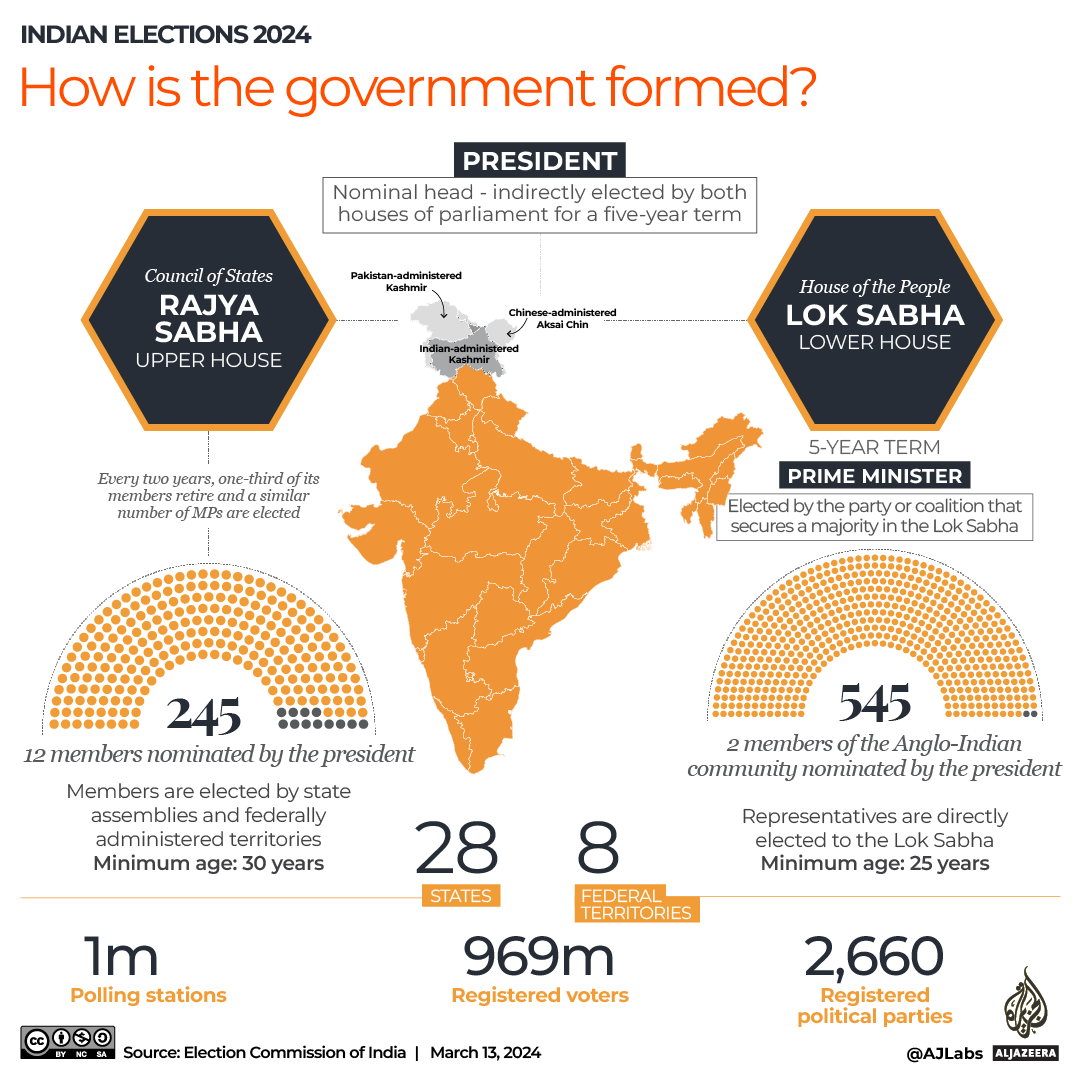
India’s election officials counted 640 million votes on Tuesday to declare the results of the country’s mammoth seven-phase election.
The vote count started at 8am local time (02:30 GMT), and all votes for 543 seats in the Lok Sabha – the lower house of India’s parliament – were counted by the end of the day on June 4.
While exit polls had predicted a landslide win for Prime Minister Narendra Modi’s Bharatiya Janata Party (BJP), the final outcome was a lot closer. The BJP emerged as the single largest party but fell short of a majority on its own. The alliance it leads did cross the halfway mark of 272 seats.
Meanwhile, the opposition INDIA alliance, led by the Congress party, performed better than exit polls had projected.
Here is how the main two alliances did, according to the latest updates from the Election Commission of India (ECI).

Here is how the BJP and Congress performed on their own.

India election results map
The map below represents the 543 seats in India’s lower house of parliament. The winning party/alliance are shaded for each constituency.

Why does the map look like that?
Each hexagon represents one seat, so densely populated but geographically small constituencies are shown equally with large districts to better reflect the democratic power in parliament. The geographical map is shown below for reference.

Which two big alliances are facing off?
National Democratic Alliance (NDA):
The National Democratic Alliance (NDA), led by Prime Minister Narendra Modi’s Bharatiya Janata Party (BJP), comprises more than three dozen parties and is expected, by exit polls, to win a majority in the general election. Modi, 73, who has been in power since 2014, is seeking a third term.
Indian National Developmental Inclusive Alliance (INDIA):
The opposition INDIA alliance, led by the Indian National Congress (INC) party, is a group of more than two dozen political parties hoping to remove the BJP’s Hindu majoritarian government.
How does the vote count work?
Since 2004, India has used electronic voting machines (EVMs) instead of paper ballots.
These machines, which are not connected to the internet, have been sealed and stored in a strongroom in the parliamentary constituency.
On the day of counting, the EVMs are taken out and unsealed in the presence of representatives from all participating political parties.

What time did vote counting start and end?
Counting for all constituencies began at 8am local time (02:30 GMT) on Tuesday, June 4. All results were declared by late that night.
Seven phases of voting
An estimated 969 million people were registered to vote in the world’s largest democratic exercise. According to the ECI, 640 million people voted.
To facilitate the process, the voting took place over seven phases from April 19 to June 1.

How is the government formed?
There are 543 directly elected seats in the national assembly called the Lok Sabha, and two seats are nominated by the president. To form the parliament, the winning party or alliance must have 272 seats. The prime minister is elected by the parliament as the leader of the house.

Who is in India’s outgoing parliament?
With a 37 percent vote share in the 2019 election, the right-wing BJP won 303 of 543 seats in the lower house of parliament, under India’s first past the post system. The Indian National Congress (INC) won 52 seats.








